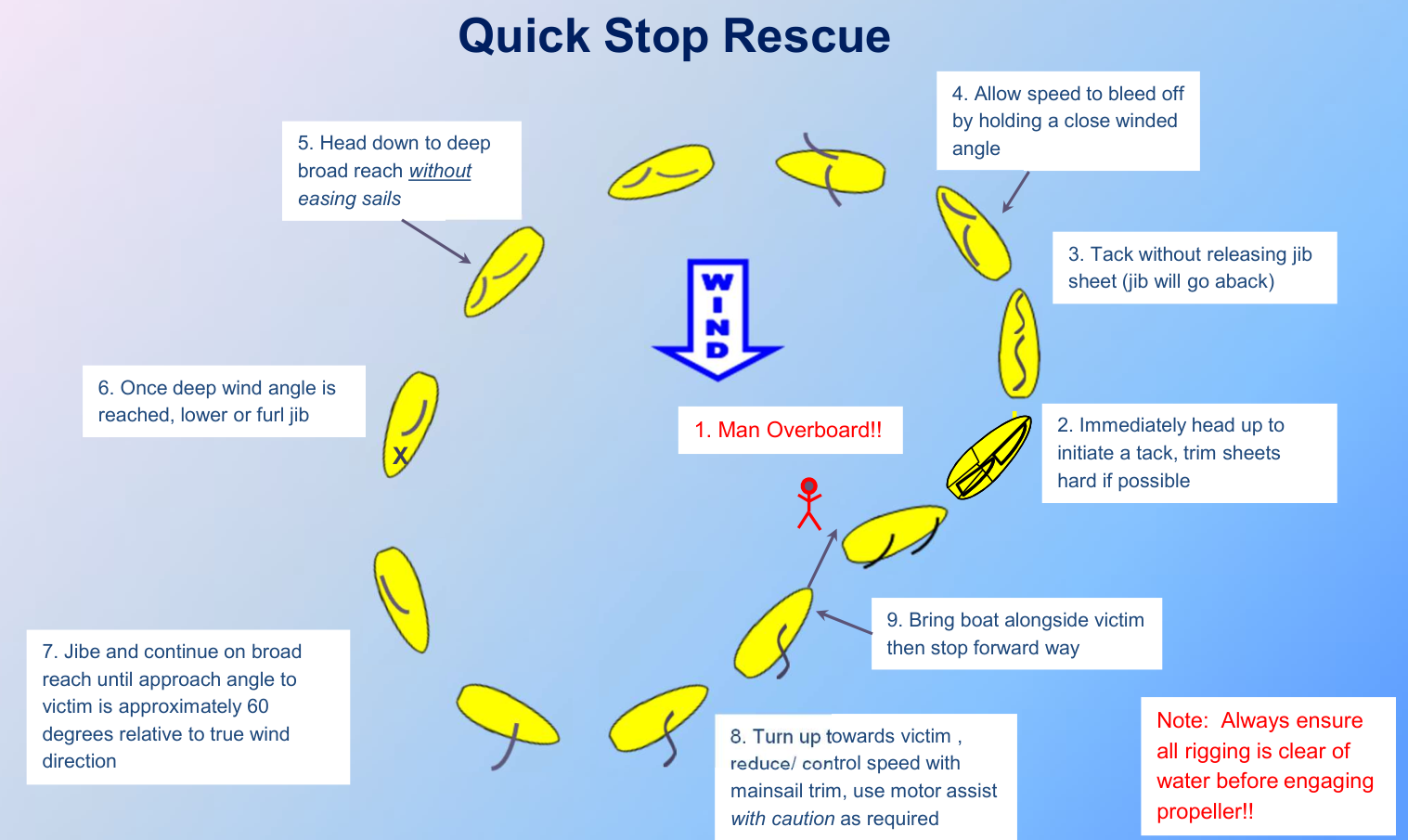POB
POB - Person Overboard Recovery
Different methods: Quick turn, quick stop, jibe stop… We practice and test the quick stop method.
- Quick Stop method (modified, jib not luffed but rolled in after the tack and back)
- Designate a pointer to maintain visual contact on the POB
- Press POB button on the GPS and mark your current heading on the compass, deploy the type 4 floatation (the square)
- Tack the boat, letting the jib back to stop the boat quickly and turn easily
- After the tack, roll in the jib once you are sailing downwind and the sail is depowered. Secure the jib sheets as you are circling back to the victim so that if you feel the need to start the engine, they will not foul the prop.
- Sail a short distance to get to leeward of the victim and then jibe the boat, leaving mainsail trimmed in while keeping the traveler pointing at the POB. (Tip: After the victim is abaft the beam or the main traveler, you should be jibing the boat and then heading up soon after.)
- Approach the POB on a close-reach from a position just leeward of the victim and luff the mainsail in time to stop the boat. (Tip: Luffing the mainsail too early in gusty conditions is a common mistake. As the boat slows to a stop, you will have no helm control as the bow is blown off. Make sure you can make your target. Aim slightly to windward of the victim to account for side slippage at low speed.)
- Stop next to the POB, preferably picking up on the leeward side
- Retrieve the POB. (Tip: During practice we use the boat hook to retrieve the fender that simulates a POB.)
- Discuss some of the steps that could help heave somebody back on board
- Because this is a potentially risky situation, good crew commands, taking charge and boat control are all very important.
- If you were heading downwind when POB occurred, follow steps 6 and 7 of the diagram because you are already leeward of the POB.
